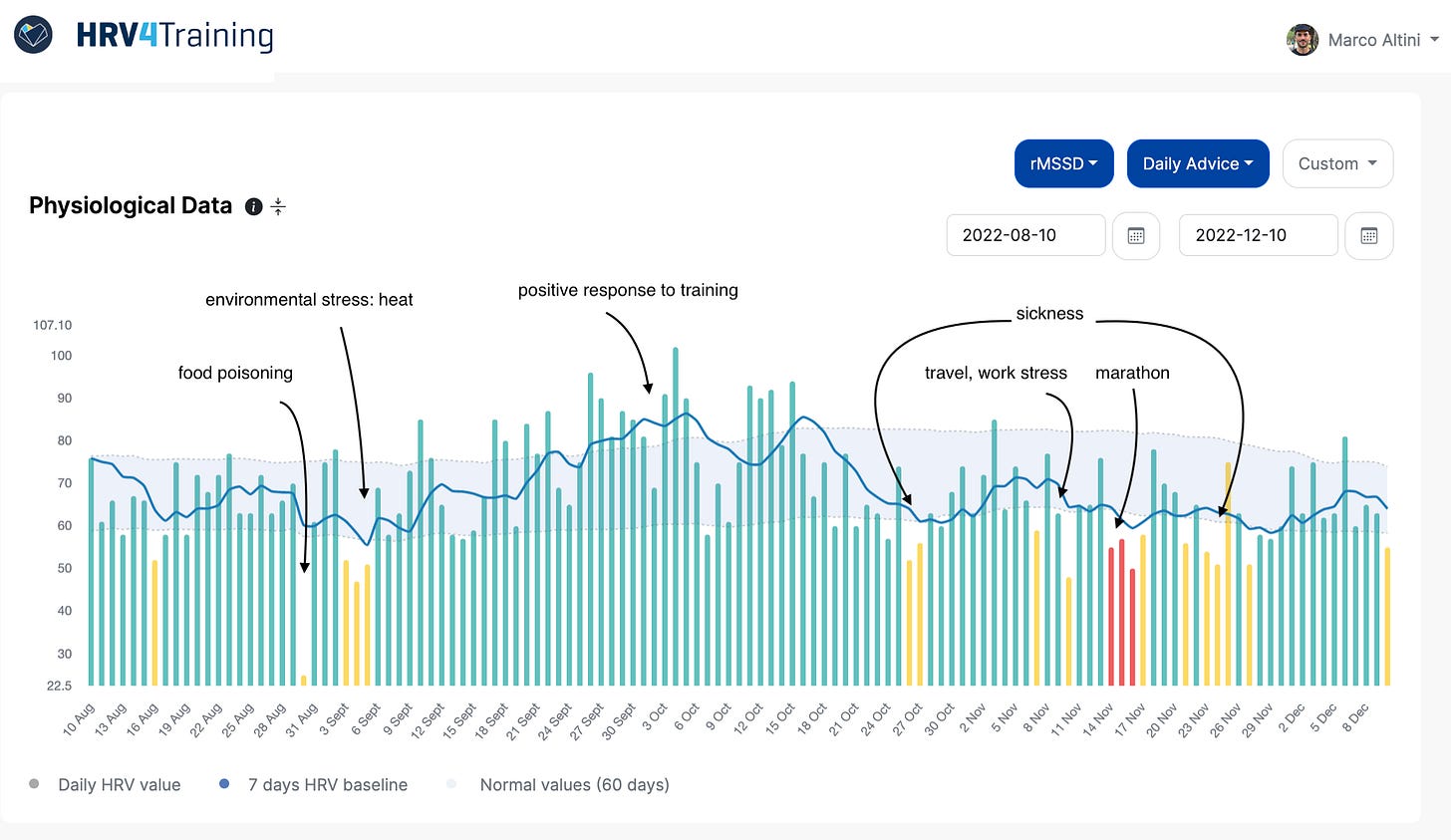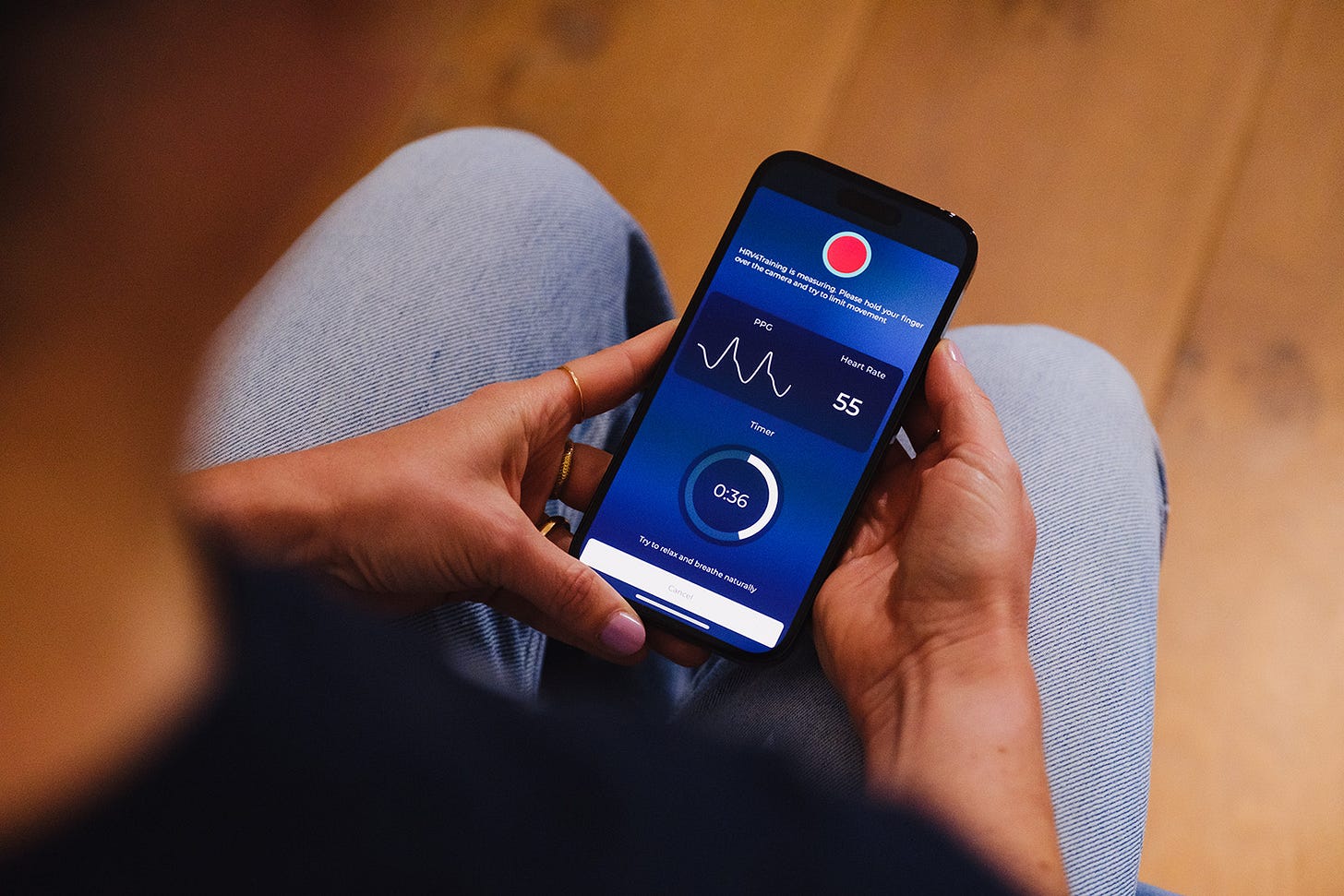How Wearables Became Tools of Distraction, Not Insight
The case for simplicity in a world of overhyped wearables. Also: a mini-rant.
Wearables today have shifted from innovative tools with the potential to better understand our physiology to toys that mostly chase engagement. Notifications, scores, and endless made-up biometrics - some of them generated continuously with no scientific or physiological basis - now dominate the user experience.
In a way, they’ve achieved their goal: reaching a massive, ever-growing user base and making more money. But this success has come at a cost. The early adopters — athletes, coaches, scientists, and high performers — are leaving. These are the people who truly understood the value of a few accurate metrics over a flood of meaningless data. They wanted to track the two things a wearable can actually measure - resting heart rate and HRV, and ended up with readiness, recovery, strain, sleep quality, and stress “scores” - often built on poor-quality data.
Now, they are walking away, overwhelmed and frustrated by the noise.
Over the past few months, I’ve spoken with many of these coaches. They’re fed up. Their athletes are confused and unnecessarily worried by metrics that have little connection to actual recovery or performance. What should be a tool of insight into the physiological response to the various stressors an athlete can face, has become a source of distraction and anxiety due to made-up metrics and a continuous need for attention.
Many of these coaches and high performers were early users of HRV4Training back in 2016-2017. Then, as wearables promised passive, seamless measurements of a few useful parameters like resting heart rate and HRV, they made the switch. Now, they are coming back.
Some have become so frustrated with inaccurate metrics and poor optical sensing that they’re exclusively using Polar chest straps with HRV4Training. And honestly? I love that. It speaks to a return to simplicity and accuracy — valuing precision over gimmicks.
I’ve witnessed the same trajectory myself. I started developing these technologies 15 years ago. Back then, it was an exciting time. We had a new way to capture physiological data accurately, non-invasively, and meaningfully. Not too long ago I used to recommend people to get a wearable if they weren’t able to establish a morning routine for their measurements. It was a great alternative to capture resting heart rate and HRV.
But then things took a turn. The focus shifted to user growth and market valuations - as opposed to technological innovation, often at the expense of the very people who supported these technologies in the first place. The principle behind the technology used in most wearables today (PPG for optical sensing of blood volume changes) is now 10-15 years old, with all new features relying on some weak population-level relationship between this data and an output of interest that cannot be measured using the wearable. As a result, we have an inevitable very large error for the individual user (things can only get worse as we approach the era of estimated blood pressure and glucose using similar, inaccurate estimates, instead of developing new sensing technologies). It’s easy to pretend to innovate with software.
We are also seeing zero transparency on decade-long issues, such as the one of signal quality, with wearables still pretending that every data point is accurate, despite overwhelming evidence of the contrary (if your rMSSD is 300ms, you are not superhuman, you have an arrhythmia) - slowly eroding trust for the ones that understand these issues and are not easily fooled.
I used to spend my time exploring the incredible opportunities in long-term, accurate measurements of physiological data. Now, I spend most of my time explaining why you can’t rely on this or that flashy metric from a heavily marketed wearable.
I haven’t recommended anyone to get a wearable in the past months. I get a headache just thinking about all the aspects I’d need to tell them to ignore if they were to use one. The HRV data is still there, but is it worth it if you are constantly bombarded with made-up nonsense? My answer at the moment is no.
It’s time to cut through the noise.
Time to refocus on accurate measurements taken at meaningful times, rather than the constant flow of meaningless notifications and scores.
At HRV4Training, we haven’t changed.
We remain rooted in the same principles we started with: simplicity, accuracy, and a focus on what really matters. As an independent business, we had nobody to please with random features or growth. And we are glad to have you back.
Let’s focus on what works.

Marco holds a PhD cum laude in applied machine learning, a M.Sc. cum laude in computer science engineering, and a M.Sc. cum laude in human movement sciences and high-performance coaching.
He has published more than 50 papers and patents at the intersection between physiology, health, technology, and human performance.
He is co-founder of HRV4Training, advisor at Oura, guest lecturer at VU Amsterdam, and editor for IEEE Pervasive Computing Magazine. He loves running.
Social:




I'm one of those people you mention - I used to comment a ton on my Garmin data but after reading your posts for a year I switched to a morning measurement & haven't looked back.
What is a shame though is that first beat do have a good platform & good solution. But it uses a 2 lead ECG chest strap. Garmin have taken the guts of that & fed the optical sensor to it. I wish we could get the ability to just wear a polar & have all the metrics first beat offer, because I do believe they have use - especially in chronic illness.
" Now, I spend most of my time explaining why you can’t rely on this or that flashy metric from a heavily marketed wearable."
That, to me, is the sad part—because ideally, your focus should be on the opportunities these technologies can create rather than their limitations. You're doing incredible work by providing well-informed insights.
On another note, I’m glad you brought up blood pressure and glucose monitoring. Personally, I feel I have enough experience to judge how I’m feeling, whether I check my watch or not—especially by listening to my body. Lately, my curiosity has shifted toward technologies that can help monitor the health of elderly and chronically ill individuals. As you mentioned, there's a lot of noise in this space, but I’d love to explore what’s being developed that could truly make a difference.